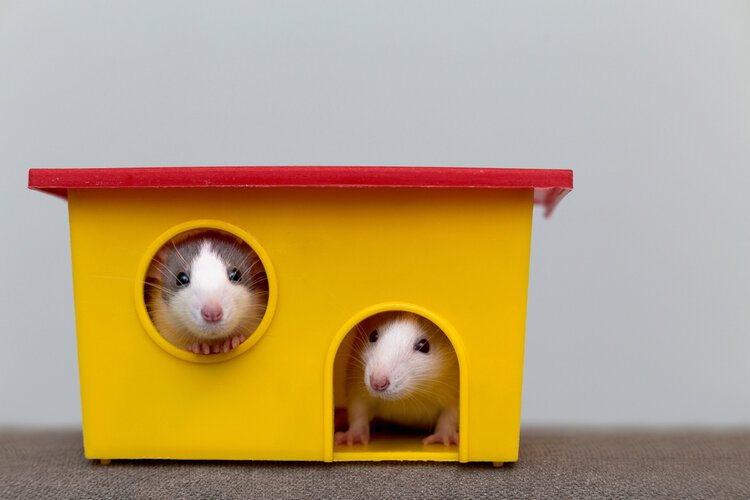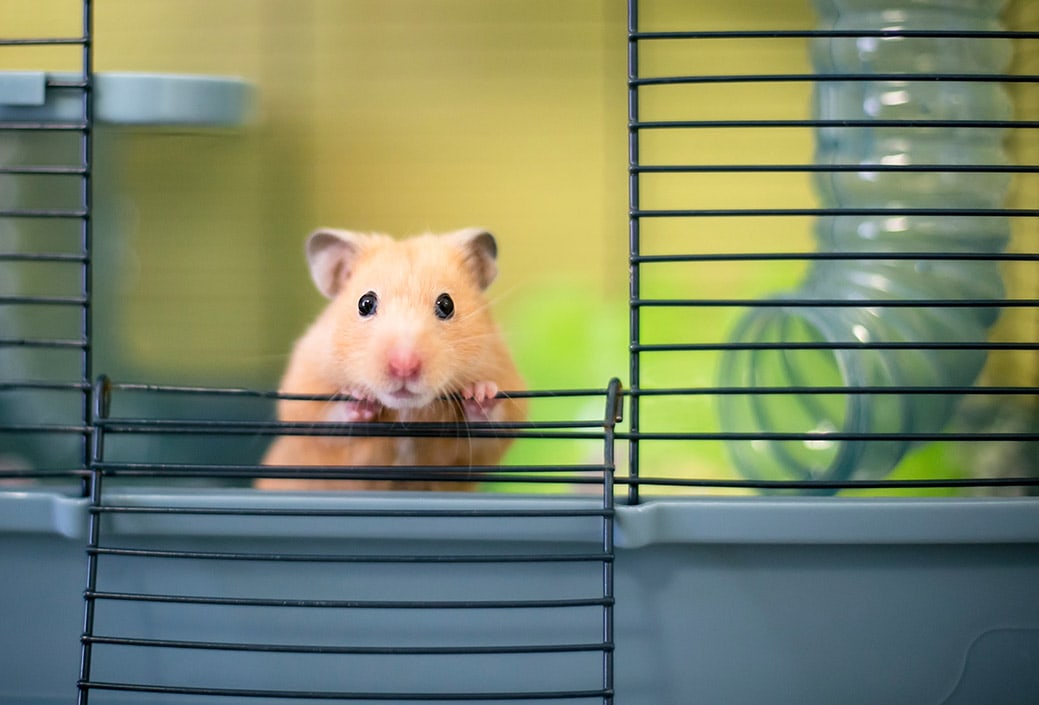
Click to Skip Ahead
If you’ve ever seen your hamster busily gnawing away at the cage bars, you might assume that this is just typical hamster behavior. But it might not be.
Hamsters that chew on the bars of their cage and start to show aggression, such as lunging and biting your hand when you put them in the cage, might be suffering from a psychological disorder called cage rage.
This disorder can range from mild to severe, so here, we discuss the primary reasons for it and the ways that you can help your hamster, which should hopefully help curb this behavior.
What Exactly Is Cage Rage?
Cage rage is a psychological disorder that can affect any animal living in a cage, but the signs will vary depending on the species.
Depending on its severity, it can prove dangerous to the hamster, you, or other hamsters that share the cage. It is also highly stressful for the hamster, impacting their health and shortening their lifespan.
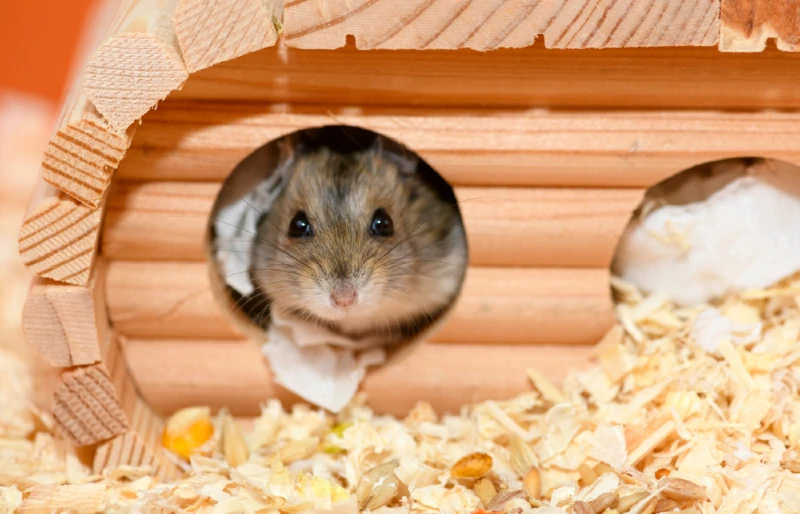
Signs of Cage Rage
The signs will depend on what stage the cage rage is at, but the following are the most common ones:
The 10 Ways to Stop Cage Rage
How you stop the cage rage entails determining what caused it in the first place. Let’s cover the methods that you can use to help your hamster.
1. Add Enrichment Toys
Beyond the usual running wheel, hamsters need various enrichment toys to help keep them occupied. Aim for items that the hamster can chew on (and not the bars) and things that they can explore.
You should also ensure that the running wheel is safe for your hamster. It should be large enough for their body, and being made of solid plastic would be ideal. You can also make your own hamster toys or purchase a few good ones.
Hamsters will dig if their substrate is deep enough and allows them to do so. This contributes towards enrichment. It is best to include substrate at least 50-80 cm deep in their cage, so that they can construct their own burrows.
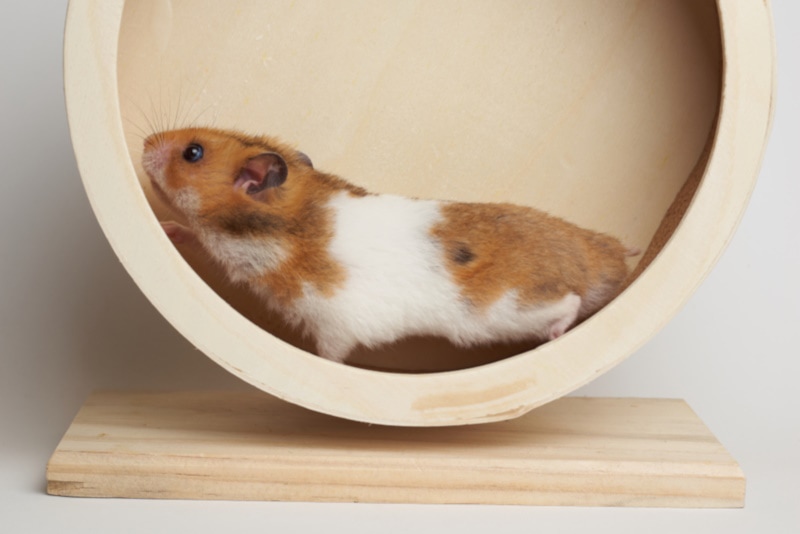
2. Invest in a Larger Cage
A primary cause of cage rage is the habitat being too small. This can especially be the case with Syrian (Golden) Hamsters because they are a large hamster species (typically 5–7 inches long).
Most experts recommend that a hamster’s cage should be as large as possible, but as a general guideline, a cage for hamsters of any size should be no smaller than roughly 40 x 20 x 20 inches. Hamsters can run for several miles in a single night and therefore, there’s no downside to offering them a larger cage.
3. Include Places to Hide
Along with tunnels and toys, you must ensure that your hamster has a few hideaways, which can help reduce stress. Having a place to hide makes hamsters feel safer, particularly if they need to hide from a stressful situation.
If your hamster builds a nest, you should always be careful to keep it as intact as possible when cleaning out the cage.

4. Remove Cage Mates
This is particularly vital for Syrian hamsters, which are typically quite territorial and usually aggressive toward other hamsters. If you are housing hamsters together, consider rehousing one to a new cage.
Some dwarf species are fine living in same-sex groups (provided they were raised together), but many hamsters can be quite aggressive and territorial. If you witness aggression directed toward other hamsters, separating them should be considered mandatory.
5. Socialize Your Hamster
Your hamster should be given regular opportunities to interact with you, particularly outside the cage. At least three times a week, handle your hamster outside the cage, and allow them to safely explore an area like the couch or a bed.
Bear in mind that some hamster species don’t like to be handled much, so get to know your hamster, and learn the right amount of handling for them. It is important to note that hamsters that haven’t been socialized from a young age are very difficult to tame later on and may resort to always attacking and lunging at your hand. Their bite can hurt and draw blood. Therefore, it is important to thoroughly research the breeder or place from which you plan to adopt your hamster.
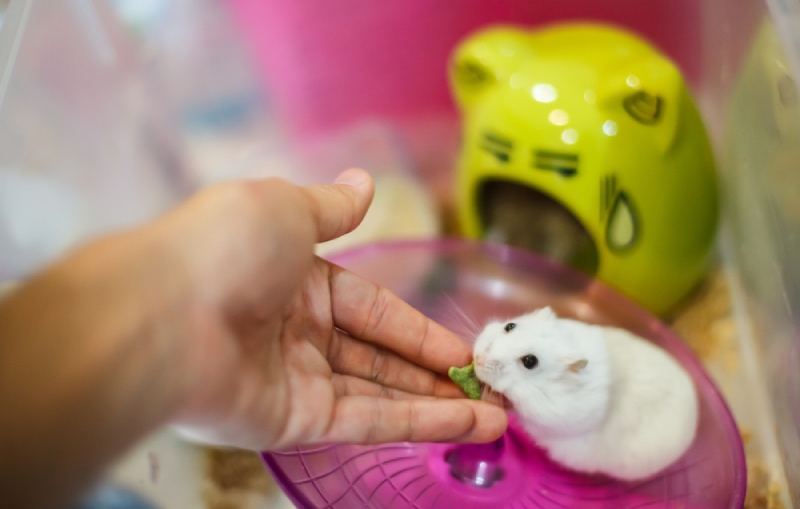
6. Let Them Sleep
Hamsters are nocturnal, which any hamster owner knows if the cage is in their bedroom! But this means your hamster will be sleeping during the day, which is when you might want to handle them.
As tempting as it is, you should always leave your hamster to sleep. Imagine suddenly being picked up when you’re having a nice nap. It’s jarring! This can lead to more stress for your hamster, so only handle them when they are awake.
7. Keep the Cage Clean
An unclean cage adds to a hamster’s stress, so you should clean it weekly and spot clean it every day—remove soiled and wet litter and replace it with fresh litter.
If the cage is average sized, you should do a deep cleaning once a week or every 2 weeks. This is why having a large cage can come in handy. If you spot clean every day, you can go longer between deep cleans, possibly every 1 or 2 months.
8. Use Tubes/Tunnels
Tubes are ideal objects for hamsters to explore safely. Just ensure that they don’t take up space inside the cage; use the ones that can create bridges and areas up along the ceiling.
Be sure to monitor your hamster as they navigate the tunnels, and remember that they will also need cleaning.

9. Check the Base of the Cage
If the base of your hamster’s cage is shallow, they won’t be able to burrow as much as they would prefer. Burrowing gives your hamster something to do and makes them feel safe. So, if you’re already in the market for a newer, bigger cage, check that there’s a deep enough base to enable burrowing. As mentioned earlier, a depth of about 50-80 cm is ideal for hamsters.
10. Ensure That There Is Enough Ventilation
This is especially critical if you are using an aquarium to house your hamster. A plastic habitat will need enough regular holes to ensure proper ventilation, and an aquarium should have a mesh ceiling.
Without the right ventilation, the habitat will be too hot and humid, and the hamster will also be trapped with the strong smells of their cage.
They will also experience extra stress if they are moved from a wire cage into an aquarium, as it will have less ventilation than the cage, and the reflection might cause them anxiety.
Facts About Cage Rage

How to Prevent Cage Rage
Preventing cage rage must start with the size of the cage and maintaining cleanliness. Separate any hamsters housed together at the first sign of cage rage, and ensure that their cages are far apart enough that they don’t know the other is there.
Ensure that their cage has at least two levels to explore, enough toys, and an appropriate running wheel. Give your hammy enough time with you for socialization, the ability to explore outside, and enough places to hide inside the habitat.
Conclusion
Avoiding cage rage relies on giving your hammy enough space—space away from other hamsters (for some species), space from too much noise and stress, and space to run around in.
Like all pets, hamsters need plenty of attention, love, and care, which means feeding them, cleaning the cage, and ensuring that they are happy. Even if your hammy seems fine, double-check the size of their cage, and get them enrichment toys and regularly rotate them to prevent boredom.
The moment that you suspect that cage rage might be occurring, take these steps, and you should be able to stop it before it becomes a serious problem.
- Next on your reading list: Male vs. Female Shetland Sheepdogs (Shelties): What Are the Differences?
Featured Image Credit: stock_shot, Shutterstock





